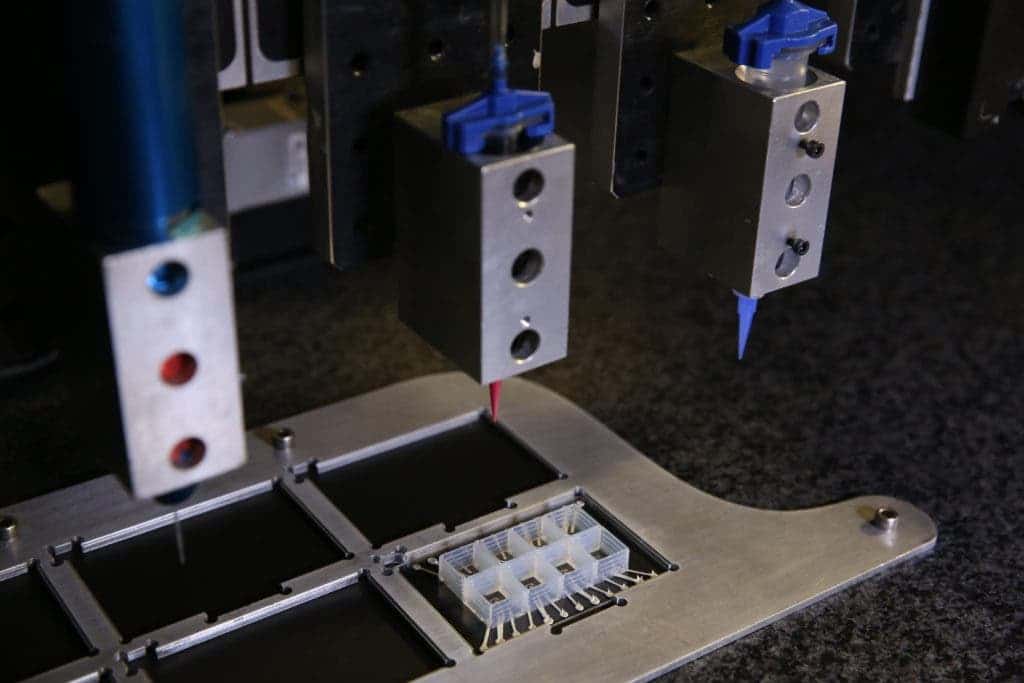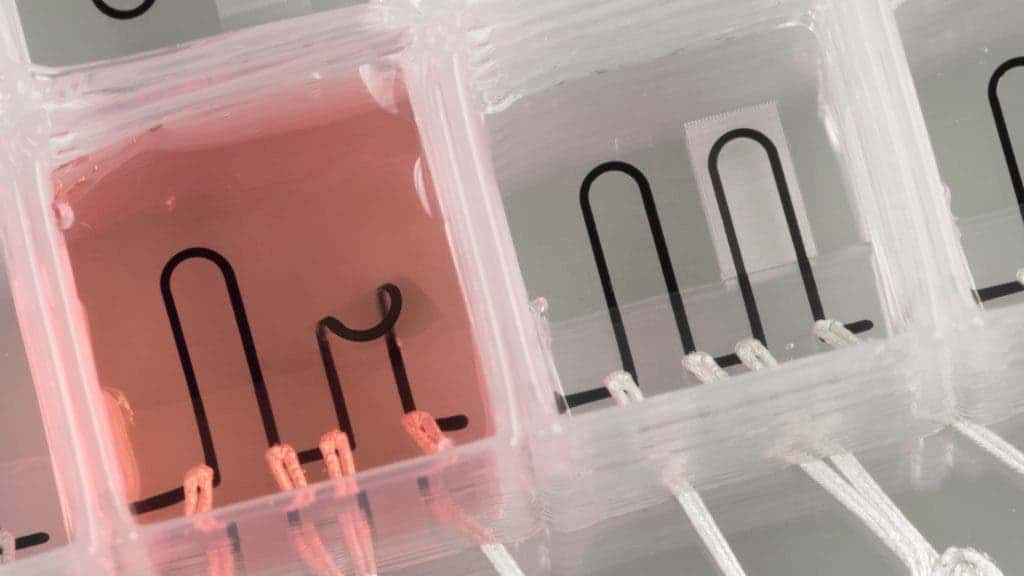
Scientists at Harvard University used novel inks and 3-D printing techniques to make the first entirely 3-D printed organ-on-a-chip. Such devices are very valuable for modeling the function of human tissues and are used to collect data. The downside is that they’re very expensive, but the newly printed heart-on-chip is easily customizable and manufactured. One day, such microphysiological systems could be widely used because they can be quickly tailored to match the properties of diseases or even the cells of individual patients.
“This new programmable approach to building organs-on-chips not only allows us to easily change and customize the design of the system by integrating sensing but also drastically simplifies data acquisition,” said Johan Ulrik Lind, first author of the paper, postdoctoral fellow at the Harvard John A. Paulson School of Engineering and Applied Sciences (SEAS), and researcher at the Wyss Institute for Biologically Inspired Engineering at Harvard University.

Lind and colleagues designed six different inks that can be integrated with soft strain sensors with a microarchitecture. In one single go, the Harvard researchers 3-D printed these inky materials into a cardiac device with integrated sensors — the heart on a chip.
“We are pushing the boundaries of three-dimensional printing by developing and integrating multiple functional materials within printed devices,” said Lewis. “This study is a powerful demonstration of how our platform can be used to create fully functional, instrumented chips for drug screening and disease modeling.”Jennifer Lewis, co-author of the new study published in Nature Materials and the Hansjorg Wyss Professor of Biologically Inspired Engineering.
Inside the chip, we can find multiple wells which separate tissues and integrated sensors. This design allows scientists to study multiple engineered cardiac tissues at once.
A couple of experiments were performed to demonstrate the new technology, including drug studies and long-term studies of cardiac tissue response to contractile stress.

“Researchers are often left working in the dark when it comes to gradual changes that occur during cardiac tissue development and maturation because there has been a lack of easy, noninvasive ways to measure the tissue functional performance,” said Lind. “These integrated sensors allow researchers to continuously collect data while tissues mature and improve their contractility. Similarly, they will enable studies of gradual effects of chronic exposure to toxins.”
“Translating microphysiological devices into truly valuable platforms for studying human health and disease requires that we address both data acquisition and manufacturing of our devices,” said Kit Parker, Tarr Family Professor of Bioengineering and Applied Physics at SEAS, who co-authored the study. Parker is also a core faculty member of the Wyss Institute. “This work offers new potential solutions to both of these central challenges.”


